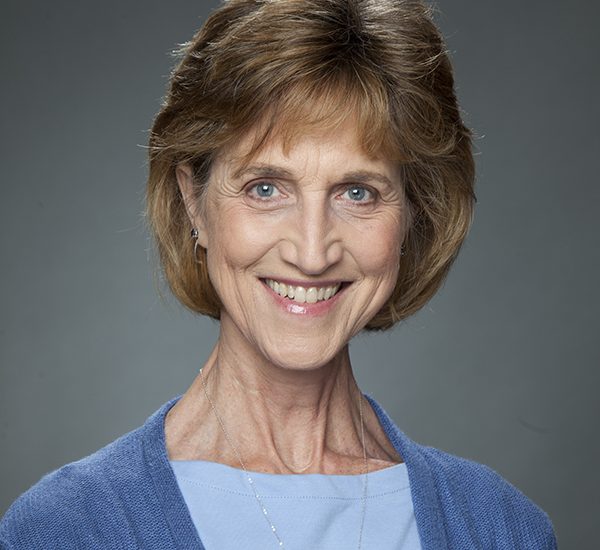10.17.2021
By uscbknpt
USC faculty member on team developing first PT-focused clinical practice guidelines for breast cancer-related lymphedema

The guidelines evaluate existing research and treatment options for clinicians and patients to maximize lymphedema volume-reducing treatment.
RESEARCH SUGGESTS THAT NEARLY ONE OUT OF EVERY 5 SURVIVORS OF BREAST CANCER will go on to develop upper extremity lymphedema — an oftentimes painful swelling caused by excess fluid accumulating in the arms, hands and fingers after breast cancer treatment.
While there are a myriad of treatments available — from manual lymph drainage to compression garments/bandages to exercise to surgical interventions — there is no one-size-fits-all approach.
It was with this in mind that Assistant Professor of Clinical Physical Therapy Marisa Perdomo MS ’03, DPT ’04 — along with four other physical therapy professionals from across the country — set out to develop “Interventions for Breast Cancer-Related Lymphedema: A Clinical Practice Guideline from the Academy of Oncologic Physical Therapy of the APTA,” published in the July issue of the journal Physical Therapy.
“There was a lot of published research regarding volume-reducing treatment for breast cancer-related lymphedema,” Perdomo said, “but this was the first time that we, as physical therapists, were evaluating the science behind each treatment option and making recommendations that our fellow clinicians could then take to their patients and make joint decisions on the best path moving forward.”
Evaluating the Science
The group undertook a process where they systematically reviewed studies published in the past two decades, evaluated the strength of the evidence and then assigned a letter grade to each recommendation.
Guidelines were given an “A” if they were backed by high-quality randomized controlled trials and provided moderate to substantial benefits. Guidelines that received an “A” used words such as “must/should” or “must not/should not,” reflecting the strong evidence base.
A recommendation receiving a “B” might also be backed by some high-quality randomized controlled trials that seem to provide slight benefit over harm or acceptable level of evidence that provide moderate benefits. These guidelines used words such as “should” or “should not.”
Recommendations receiving a “C” involved case-controlled studies, restrospective cohort studies or other low-quality trials and provided only slight benefit. These guidelines used language such as “may” or “may not,” reflecting their weak evidence base.
Finally, a guideline was evaluated as “Best Practice” if it was based on current clinical norms or expert opinions.
Some examples of guidelines, which are segmented based on the stage of severity of the cancer-related lymphedema include:
If early signs and/or symptoms of lymphedema are noted, the patient should be individually fitted with a compression garment, instructed in an exercise program and provided education as first line treatment. (Grade A)
In all treatment phases, compression interventions should be tailored for the individual’s lymphedema stage, impairments and preferences. (Grade A)
Progressive resistance training is safe when an individualized program is supervised at least 1 month post-surgery. (Grade A)
“There are so many variables — lifestyle, comorbidities, even an individual’s comfort level with certain treatments — that it was important to give clinicians a wide range of interventions so that they can discuss them with their patients and come up with a viable treatment option,” Perdomo said.
She also explained that treatment options depend on the stage and severity of the breast cancer-related lymphedema.
“Physical therapy for lymphedema is very time consuming and can be expensive, so it’s important to find the intervention that best addresses each stage of lymphedema and not use a one-size-fit-all approach,” she added.
Heal Thyself
Perdomo first became interested in treating cancer-related lymphedema in the mid-1990s. Having successfully fought two bouts with Hodgkin’s lymphoma in her adolescence, Perdomo was diagnosed with breast cancer in her 30s — a result of the full-body radiation treatment she had endured as part of her Hodgkin’s disease treatment, she said. After a mastectomy and several lymph node dissections, Perdomo — who had long endured lymphedema in her arms but didn’t know it at the time — found herself facing a serious case of lymphedema.
“I was really surprised by the lack of treatment options at the time,” said Perdomo, who wanted to learn more about her condition. In 1997, she completed a certificate program in lymphedema at the Foldi Clinic in Germany. “I wanted to improve the quality of life for my patients with cancer-related lymphedema in a way that hadn’t been done for me.”
Perdomo hopes that these clinical guidelines will do that on an even bigger scale, giving patients living with cancer-related lymphedema more options to intervene earlier and optimize their recovery efforts.
“These women have successfully fought breast cancer, and now they have this very visible scar that they have to carry around. If we can intervene earlier, I am certain we can help these survivors continue to live and thrive,” she said.
She hopes that these guidelines will also continue to prompt new research, strengthening guidelines and improving clinicians’ ability to treat their patients.
This isn’t the first set of guidelines related to breast cancer-related lymphedema that Perdomo has been involved in drafting.
In 2017, this same guideline development group developed the “Diagnosis of Upper Quadrant Lymphedema Secondary to Cancer: Clinical Practice Guideline From the Oncology Section of the American Physical Therapy Association,” guidelines that help clinicians diagnose upper quadrant cancer-related lymphedema — a topic they aim to revisit in the coming years.

